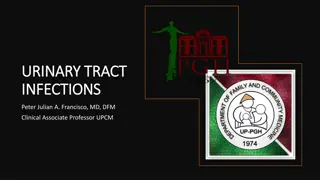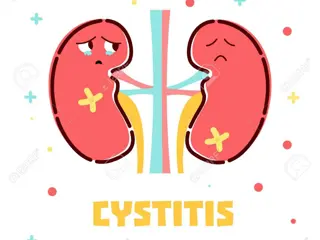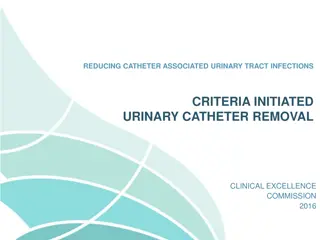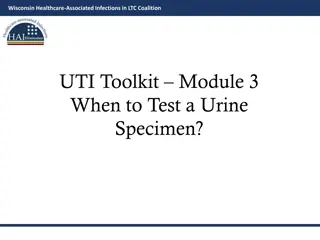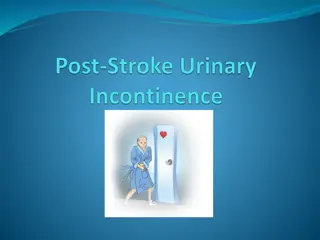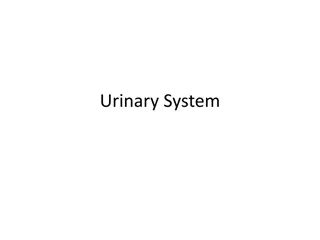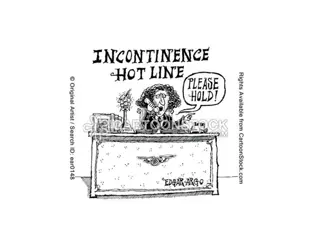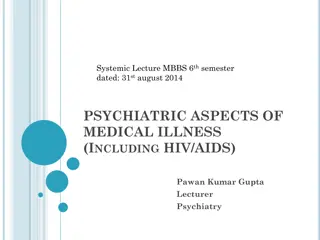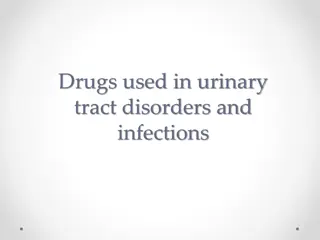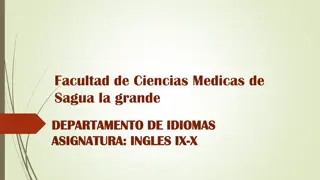
Recognizing Signs and Symptoms of Urinary Tract Disorders
Learn about the signs and symptoms of urinary tract disorders including pain, hematuria, dysuria, urinary retention, and more. Discover the various types of pain associated with urinary tract issues and understand the different manifestations of hematuria. Explore the possible causes and implications of these symptoms to better monitor and manage urinary health.
Download Presentation

Please find below an Image/Link to download the presentation.
The content on the website is provided AS IS for your information and personal use only. It may not be sold, licensed, or shared on other websites without obtaining consent from the author. If you encounter any issues during the download, it is possible that the publisher has removed the file from their server.
You are allowed to download the files provided on this website for personal or commercial use, subject to the condition that they are used lawfully. All files are the property of their respective owners.
The content on the website is provided AS IS for your information and personal use only. It may not be sold, licensed, or shared on other websites without obtaining consent from the author.
E N D
Presentation Transcript
Signs and Symptoms of Urinary Tract Disorders Mohsen Amjadi M.D. amjadizm@yahoo.com
Symptoms of urinary tract disease Pain in the costovertebral angle. Hematuria :passage of blood in the urine. Dysuria: pain associated with micturition. LUTS.
Symptoms of urinary tract disease Urinary Retention. Urinary Incontinence. Pneumaturia :passage of bowel gas in the urine Hemospermia: passage of blood in the semen.
Pain Dull Pain Pain in the renal angle, the posterior space between the lowest rib and the iliac crest Renal inflammation ,renal stones, tumors or polycystic disease may persistent loin pain even without obstruction. This area may also be tender to palpation or percussion. cause dull and
Pain In acute infections such as pyelonephritis or bladder infection, renal stone the pain is more severe and is usually associated with systemic features and disorders of micturition .
Pain Renal Colic Acute obstruction and distension of the pelvicalyceal system produces excruciating loin pain which often groin ,scrotum or labium. radiates to the
HAEMATURIA Haematuria is divided as: (1)gross haematuria (2)microscopic haematuria
HAEMATURIA More than 3 rbc/hp after centrifuge called microscopic bleeding, and 1ml blood in 1000ml urine appears red color called gross hematuria. Sometimes urine presents red color because of taking some drugs(Rifampicin)
HAEMATURIA This red urines can be distinguished from haematuria by the absence of red blood cells on urinary microscopy.
CAUSES OF HAEMATURIA (1) Irritation from infections (2) Stone diseases (3) Trauma (4) Benign prostatic hypertrophy(BPH) (5) Tumors (6) Some anticoagulant therapy
DIAGNOSTIC FEATURES OF HAEMATURIA Initial Hematuria is in the beginning of urination, means bleeding from urethra . Terminal hematuria in the end means lesion arise from bladder triangle or bladder neck or posterior urethra. Full-course hematuria means bleeding from bladder or beyond bladder. Three-glass test .
DIAGNOSTIC FEATURES OF HAEMATURIA Gross bleeding results in the passage of clots, the shape of which sometimes indicates their origin. Clots that form in the ureter are long and stringy, Clots formed within the bladder are more globular, irregular.
DIAGNOSTIC FEATURES OF HAEMATURIA Urethral bleeding may leak out independently of micturition, or be seen only at the beginning or end of the urinary stream. Urethrorrhagia
DISORDERS OF MICTURITION DYSURIA Feeling pain or discomfort on micturition, often having difficulty in voiding. The pain can be described as burning or scalding .
DYSURIA Any irritation of the urethra may cause dysuria. The most common cause is urinary tract infection, but urethral instrumentation, or the presence of a catheter, also commonly cause dysuria.
Frequency Frequent passage of small quantities of urine.
Frequency Bladder irritation and infection is the most common cause of urinary frequency is usually accompanied by dysuria. The patient feels an almost constant need to pass urine regardless of the amount of urine in the bladder. prostatic hypertrophy(BPH)
Frequency Small or indistensible bladder This is a rare cause of frequency and may be due to surgical resection or inflammatory fibrosis such as tuberculosis or idiopathic interstitial fibrosis.
NOCTURIA The need to pass urine at night. The patient may wake with the urge to void hourly. normally,adults arise no more than twice at night to void
Urgency The sudden desire to void
URGENCY The sudden desire to void, which if ignored, may result in incontinence. Bladder neck irritation or abnormal entry of urine into the proximal urethra would result in urgency.
HESITANCY Difficulty in initiating micturition, known as hesitancy. The usual cause is prostatic obstruction, which prevents entry of sufficient urine into the proximal urethra to relaxation. initiate sphincter
POOR URINARY STREAM When there is a urethral obstruction, such as BPH and urethral stricture, the urinary stream is reduced.
POST-MICTURITION DRIBBLING Urine flow does not cease completely at the end of micturition. This condition may result from abnormal sphincter function, voiding incompletely.
RETENTION OF URINE Inability to void when the bladder is full due to the sphincter unable to relax or a proximal urethral obstruction. Acute retention---most commonly seen in postoperative patients. Other common cause are BPH, obstruction of blood clot or stones.
RETENTION OF URINE Chronic retention---abnormalities of structure or function of the bladder muscle or sphincter mechanism, or persistent urethral obstruction.
RETENTION OF URINE In chronic retention, voiding of urine is often incomplete. The bladder tend to be over distended. Bladder may show muscle hypertrophy, diverticula. Gradually the residual volume approaches maximum bladder capacity.
URINARY INCONTINENCE Stress Incontinence Urge Incontinence Overflow Incontinence True Incontinence
URINARY INCONTINENCE Stress incontinence Any sudden increase of pressure on the bladder ( coughing, sneezing or laughing) causes small quantities of urine to leak out. Women with many children damage the pelvic floor during childbirth, post-TURP, contracted and small-volume bladder, et al.
URINARY INCONTINENCE Urgency incontinence detrusor activity becomes hypersensitive so that the voiding reflex is initiated when the bladder volume is well below full capacity.(cyctitis,neurogenic bladder)
URINARY INCONTINENCE Overflow Urinary Incontinence overflow urinary incontinence is secondary to advanced urinary retention and high residual urine volumes, Bladder is chronically distended, and never empties completely. Urine may dribble out in small amounts as the bladder overflows.
URINARY INCONTINENCE True Incontinence Refers to the involuntary loss of urine at all times and in all positions. Continuous incontinence is most commonly caused by damaging of the urethral sphincter , Neuropathic bladder dysfunction as result of diabetes strokes , Parkinson s disease.
Hematospermia Refers to the presence of blood in the seminal fluid , Most commonly results from nonspecific inflammation of the urethra,prostate,and/or seminal vesicles
Physical examination hypertension may be a feature of pyelonephritis, renal artery stenosis, polycystic kidneys, et al.
Abdominal examination Huge renal mass can be seen: Wilm s tumors, polycystic kidney. A lopsided bladder in chronic retention. A bimanual techniques: to palpate kidney diseases. Lower abdomen palpation for bladder mass.
Rectal examination In the male, the prostate is palpated for size, shape, and consistency. On palpation, the normal prostate has a smooth surface and a firm consistency, and is divided into two lateral lobes by a midline groove. Prostatic carcinoma: irregular, hard nodules
Are any blood tests likely to be helpful in diagnosis PSA for Pca.
Ultrasonography Valuable non-invasive technique for investigating a suspected renal mass, differentiatng solid from cystic lesions, and demonstrating dilatation of the renal pelvis.


